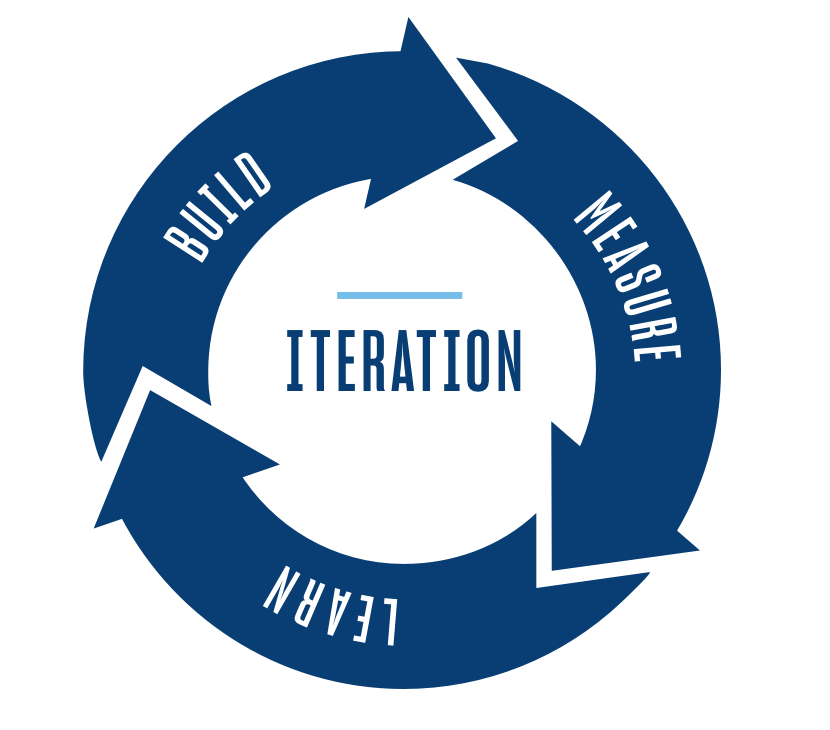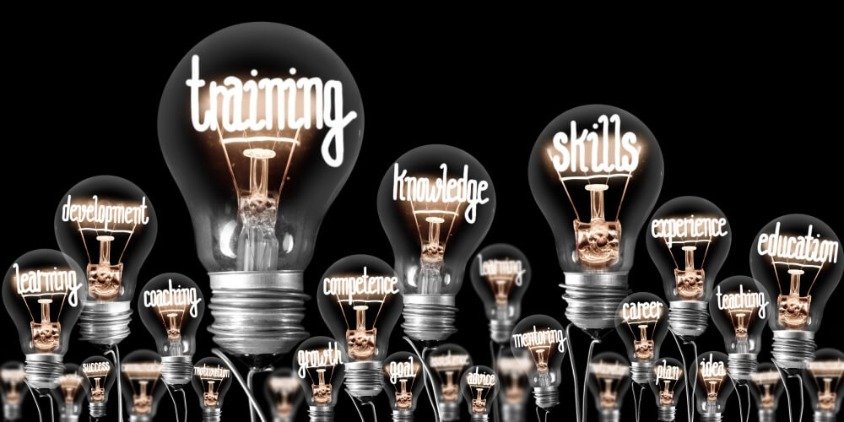Whether you’re hoping to bring a product to market or thinking of starting up your own business, you’ll need to consider the challenges of survival in today’s increasingly competitive market. We’ve all heard the adages about the high failure rates of startups, and the statistics bear it out — according to the most recent figures collected by the U.S. Bureau of Labor Statistics:
- ~20% of startup businesses will fail within their first year
- ~50% will fail within five years
- ~65% will fail within 10 years
That’s not even considering the current level of economic uncertainty, rising inflation and threats of a recession. Are there ways to mitigate the risks?
There’s a few proven ways to increase your startup’s chance of survival — and one that we put a lot of stock into is the lean startup methodology. This approach attempts to reduce risks by:
- Prioritizing experimentation over rigid planning
- Relying on customer feedback over intuition
- Utilizing iterative design over traditional design’s up-front development
There’s much to unpack, so let’s take a closer look at the lean startup model and the reasons it has proven to be so popular and effective.
What Is a Lean Startup?
The lean startup method was developed by American entrepreneur Eric Ries, inspired by precursor models of production such as lean manufacturing and lean software development. Starting with his blog and then eventually through his bestselling book, The Lean Startup, Ries reflects on his experience with his own failed startup and how much time, money and effort was wasted on focusing on product development and marketing.
Reis’ approach argues that instead of developing a product and then hoping that demand will emerge, a lean startup should focus on developing products that consumers have already demonstrated a desire for. This ensures that a market will already exist as soon as the product is launched, which not only helps to guarantee sales, but also makes marketing easier, as well.
So, how are you expected to create something that people want but doesn’t exist yet? You’ll need to answer the question by finding the right product. The lean startup principles are structured around a build-measure-learn feedback loop to help you find that product:

- Build — Lean startup begins by realizing a workable idea that your team can test. One tactic is the development of a Minimum Viable Product (MVP), which is a version of a new product or service that will allow the team to collect the most feedback and data through the least effort.
- Measure — The startup asks prospective customers to try the MVP and then obtains feedback utilizing surveys, interviews, analytics and field testing. From there they decide whether the product should be scrapped or modified.
- Learn — This step, also called validated learning, is where the startup assesses customer interest to determine next steps in development. Is it time to release the product, or is there a need to pivot back to the build stage and iterate?
A learn startup will continue to gather information about its prospective customer base throughout the development process. The hope is to inform development decisions by finding answers to such questions as:
- What are the projected customer churn rates?
- What’s the expected lifetime customer value?
- Is there a larger market that will allow the company to grow and scale?
- Are there faster, less expensive or more efficient ways to create future versions of the product?
The build-measure-learn loop of the iteration process continues until the startup feels that it has a strong, marketable and viable product that customers are interested in and will purchase.
Why Lean Startup?
The fatal flaw of too many startups is that they begin with an idea for a product that they think people want. They then spend months, sometimes years, perfecting the concept without ever showing the product, even in a very rudimentary form, to their prospective customers. That can miss vital insights on the usability — or even viability — of a product.
The build-measure-learn loop attempts to solve for this uncertainty. The lean startup process allows new companies to:
- Better understand consumer interest: Testing an MVP early in the process ensures that there is demand for a product or service. Using an MVP to gather feedback also helps ensure that it will meet the needs of the intended customers.
- Improve development processes earlier: The iterative nature of the lean startup process allows companies to build more efficient processes earlier in the development cycles. This provides insights in how to strip away unnecessary steps and costs.
- Avoid the unnecessary use of resources: Don’t fall victim to sunk costs. In the lean startup model if an idea is likely to fail, it will fail quickly and cheaply — hence the term “fail-fast.” This saves not only time, but also money.
- Be more adaptable and flexible: The iterative and incremental process not only uses less time and resources, it allows more room to pivot to new ideas or change course altogether.
Why Stay With a Traditional Startup Process?
There are some advantages for a startup to stay with a traditional development process:
- Reduces the unknowns: There’s a lot of uncertainty in the lean startup process, which can make it easy to lose track of goals or set milestones. A more traditional startup process makes use of meticulous planning and product development — which clearly lays out all future goals and expectations.
- Increased secrecy and security: Developing and testing an MVP means bringing in users from outside the company. While non-disclosure agreements help protect IP, they’re not foolproof. The entirely internal means of traditional development reduces exposure. This increases secrecy and security, which helps to protect against IP theft or being beaten to market by competitors.
- Can be easier to secure financing: Most investors prefer granting money to companies that can outline their plan and promise returns. Certain financial institutions, including banks, will often have strict lending criteria for loans. They’re likely to be more comfortable financing companies with a traditional startup process that can provide thorough plans and financial projections.
Lean Startup vs. Traditional Startup
One way to summarize the difference between these two models would be that while traditional companies execute a business model, lean start-ups look for one to execute. Here’s a breakdown of other points of comparison.
| Lean Startup | Traditional Startup | |
| Business Plan | A hypothesis-driven model that looks for an initial product idea that will be iterated on. | A formal business plan intended to guide the company. |
| Timeline | Eschews strict timelines and prioritizes bursts of product development followed by customer feedback. | Develops a formal 2-5 year plan that is meant to be strictly followed. |
| Development | A fast, agile development process that is iterative and incremental. Follows a build-measure-learn loop. | Follows the more measured and sequential “waterfall” development that specifies product details before development. |
| Customers | First does customer research to determine if there are interested customers and then follows with market research to see how large the market is. | Assumes that existing markets will be interested in their new product or services as it’s better/faster/less expensive than alternatives. |
| Secrecy | Prioritizes testing MVPs in markets and soliciting prospective customer feedback. | Prioritizes protecting secrecy around the product and what’s being made. |
| Employees | Requires skilled, driven workers who can learn, adapt and work quickly. | More likely to hire workers based on previous experience and proven ability. |
| Failure | Expected — happens early and often. | Meant to be avoided if at all possible. |
| Success | Deprioritizes returns in early development. Instead measures growth and success based on product demand, customer acquisition cost, lifetime customer value and customer churn rate. | Lives and dies by revenue. Measures growth and success through income statements, balance sheets and cash flow statements. |
Example of a Traditional Startup vs. a Lean Startup
Summarizing a traditional startup vs. a lean startup approach is like the difference between identifying a problem that can be solved and looking for a problem to solve with a product. Some of the best examples I can think of come from my own, personal experiences. One successful lean startup case actually resulted from USD’s own Torero Ventures Lab program. In that program, a group of international students realized that there was a need to find housing for students like themselves.
Essentially, the international students who were coming to attend graduate programs in the U.S. — like USD — struggled to find and secure apartments if they didn’t already have on-campus housing. The issue was that the normal means by which landlords would validate their credit risk weren’t applicable, as the students usually didn’t have credit scores and often lacked credit cards. This was not only a problem for the students, but the landlords often lost out as well, since these students represented reliable sources of rental income.
Starting with their connection to other international students, the founders knew that there was a need for a program that could connect students and landlords. But, they had to determine whether the program itself could be viable. So, they reached out to local landlords to determine their needs, interest and the overall viability of their proposed program. Out of those meetings, the founders proposed that they could absorb part of the credit risk for the landlords in exchange for later compensation — making an effective business model. That model became the HUGS (Housing Undergraduate & Graduate Students) international program.
A project like HUGS succeeds because the founders took the time to go through the customer discovery process before investing in product development. On the other hand, one example of a traditional development process that fell short of expectations was a company that I had actually worked with that had developed an ultraviolet water purification system. This product was smaller and more energy efficient than other similar devices and the company saw great success in selling to smaller food and beverage companies.
However, the company then sought to expand into larger markets by selling the products to municipalities. Surely, cities and towns would be interested in the efficiencies and potential savings? However, after dozens of meetings where the company CEO met with numerous municipalities, the company never secured a customer in that space. Essentially, it was a bad product-market fit, as municipalities had many more considerations than private companies when it came to investing in such a novel technology and would not commit to making a purchase.
Taking the lean startup approach is a more effective means of determining if there’s anyone who will actually pay for your product.
What You Need to Know About the Lean Startup Method
While there isn’t a “right” way to create a startup, the lean startup method has some unique advantages that allow it to reduce waste and react faster to feedback, changing market conditions and fresh insights. Adopting a lean startup methodology can better position a business for success in specific industries — especially tech development. Here are the four major takeaways to remember about lean startups:
- Their strategy is to identify a problem that needs to be solved, then develop a minimum viable product to meet it.
- Instead of creating a full business plan, their product development operates by rapidly building working models to test hypotheses and then iterate on design.
- They expect failure to be the rule, not the exception. Any time customers do not react as desired, the startup is quick to adjust its development to limit losses.
- They are constantly engaging with potential customers in targeted markets to determine a product’s viability. They’ll gauge reactions to product features and pricing as well as measure for variables such as customer acquisition, churn rate and lifetime value.
At the University of San Diego’s Master of Science in Innovation, Technology and Entrepreneurship we cover the principles of the lean startup in our classes and then practice them within our capstone course. As a part of the MITE program, you’ll receive the instruction and support to build a lean-style business model, including insights on how to assess and understand markets, develop a product idea and how to validate its market viability
If you’re looking for an opportunity to learn from startup professionals who’ve experienced both success and failures and collaborate with like-minded aspiring entrepreneurs — contact us to learn more about our program.




